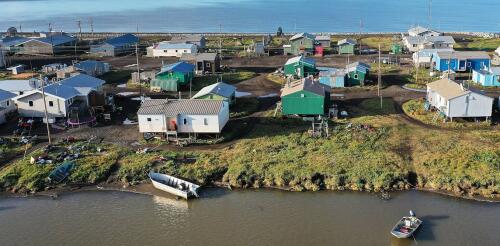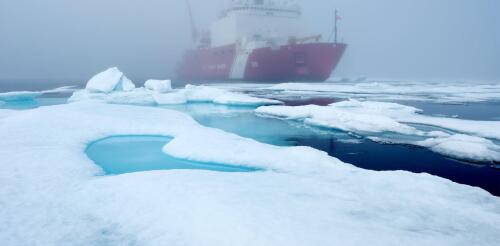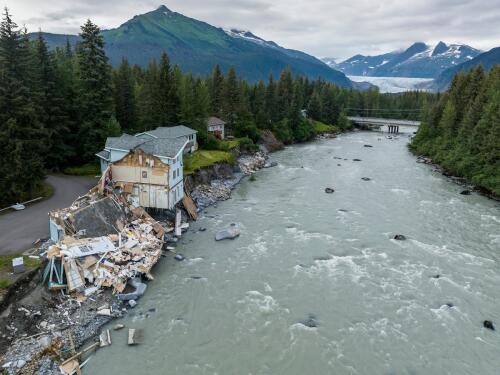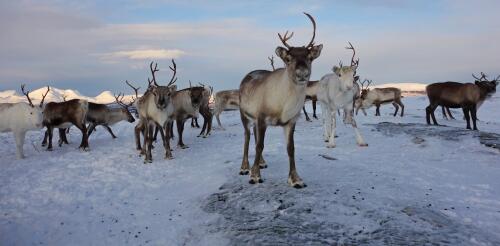Arctic
As winds and waves from Typhoon Merbok devastated communities along the coast of Western Alaska in 2022, Reppi Swan Sr.’s phone began to ring at Kivalina, a barrier island 80 miles above the Arctic Circle. A neighboring family had lost 3 feet of land to the rumbling lagoon, and their home was now sitting just 6 feet from the angry water’s edge. Reppi called his brother Joe Swan Jr. and quickly slid into his insulated rain gear. As a volunteer first responder, Reppi plans for emergencies like this. He and his wife, Dolly, had been patrolling the island for dangerous erosion every few hours during the storm. To prepare, he had already inspected the city’s heavy equipment and located a pile of boulders left over from a recent construction project. Working through the rain, Reppi delivered boulders to the threatened home. With their cousin Carl Swan serving as a spotter, Joe carefully arranged the boulders with a backhoe to stabilize the bank. It would hold at lea...
The Russian invasion of Ukraine launched in February 2022 has sent economic, social and political shock waves around the world. In a newly published policy brief, we and other researchers and conservation scientists describe how these effects extend to biodiversity conservation efforts far beyond Ukraine. Animals, plants and ecosystems don’t recognize political boundaries, so protecting them often requires international cooperation. Over many decades, countries have developed a network of international agreements and arrangements for protecting biodiversity. Now, however, the war at Russia’s hands is delaying a number of those efforts, stopping others, and even sending some into reverse. War and the spoon-billed sandpiper As one example, efforts to save the critically endangered spoon-billed sandpiper (Calidris pygmaea) from extinction are now at risk as a result of the war in Ukraine. Russia’s treeless tundra, in the high Arctic, is the summer home of coun...
Atmospheric rivers, those long, powerful streams of moisture in the sky, are becoming more frequent in the Arctic, and they’re helping to drive dramatic shrinking of the Arctic’s sea ice cover. While less ice might have some benefits – it would allow more shipping in winter and access to minerals – sea ice loss also contributes to global warming and to extreme storms that cause economic damage well beyond the Arctic. I’m an atmospheric scientist. In a new study of the Barents-Kara Seas and the neighboring central Arctic, published Feb. 6, 2023, in Nature Climate Change, my colleagues and I found that these storms reached this region more often and were responsible for over a third of the region’s early winter sea ice decline since 1979. More frequent atmospheric rivers By early winter, the temperature in most of the Arctic is well below freezing and the days are mostly dark. Sea ice should be growing and spreading over a wider area. Yet the...
This past summer was the hottest on record in the Arctic, which is warming nearly four times faster than any other location on the planet. And the symptoms of that warming laid bare a rapidly changing region that in many ways barely resembles what it once was. Key data points show that the Arctic continues to become less icy, wetter and greener, according to a report card released by the National Oceanic and Atmospheric Administration on Tuesday. The trends, all linked to a warming climate, have been observed for decades. And they played out in dramatic ways this summer: Out-of-control wildfires forced entire communities to evacuate. A river surged from its banks and into homes because of dramatic glacial thinning. Near the peak of Greenland’s ice sheet, more than 10,000 feet above sea level, temperatures rose above freezing for only the fifth time on record. Even amid rapid change, variability of weather patterns meant a few parts of the Arctic stil...
In the Arctic, the freedom to travel, hunt and make day-to-day decisions is profoundly tied to cold and frozen conditions for much of the year. These conditions are rapidly changing as the Arctic warms. The Arctic is now seeing more rainfall when historically it would be snowing. Sea ice that once protected coastlines from erosion during fall storms is forming later. And thinner river and lake ice is making travel by snowmobile increasingly life-threatening. Ship traffic in the Arctic is also increasing, bringing new risks to fragile ecosystems, and the Greenland ice sheet is continuing to send freshwater and ice into the ocean, raising global sea level In the annual Arctic Report Card, released Dec. 13, 2022, we brought together 144 other Arctic scientists from 11 countries to examine the current state of the Arctic system. Some of the Arctic headlines of 2022 discussed in the Arctic Report Card. NOAA Climate.gov...




